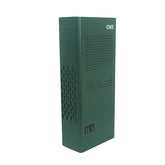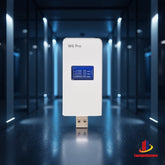Ship Tracking Microsatellites and GPS Jamming
It is also possible to better understand identity theft, albeit indirectly. AIS data has been used in this way by other organizations. For example, if AIS location data indicates that a vessel is crossing land, this is a strong indicator of deception.
Maybe Hawkeye could do something similar based on other modes of transportation like trucks and trains. If publicly available location data is transmitted by trucks or other assets, satellites can pick up those signals directly, Serafini said. The company may also use data from third-party providers. If the reported location does not match the actual location, it may be the result of identity theft.
"We haven't done that yet," Serafini said, "but we will, and we think we can buy commercial databases based on the assets we want to track."

HawkEye can even map these disturbances over time. This may have helped the truck driver's personal privacy GPS jammer disrupting the Ground Augmentation System (GBAS) at Newark Liberty International Airport in Newark, NJ as he passed. Intermittent interruptions were a headache at the time.
The system may also be able to collect enough data to determine if signals near the frequency bands used by GPS are interfering with GPS receivers. GPS users have recently faced this possibility from Ligado Networks' proposal to use satellite frequencies close to those that GPS uses for terrestrial services. Using the HawkEye system's signal frequency, strength and location data, it is possible to determine if the Ligado signal is interfering with GPS devices.
However, one of the challenges of doing so, Scott said, is identifying a specific transmitter that could be problematic -- especially if that transmitter is part of a network of other nearby transmitters. The situation is further complicated by the fact that communication transmitters transmit most of the power to the ground.
"I'm not saying it's impossible," Scott said. "I don't want to compromise the capabilities of these guys; it's a very capable group. But at the same time, I try to be as careful as I can when evaluating."
HawkEye is still analyzing it, and it's too early to get any further details on the potential of this capability.
Scott suggested that HawkEye might be able to create a heatmap showing the signals and their strengths in different geographic locations. "The heat map will indicate if you can see the problem in that area."
Serafini says it already has such a service.













